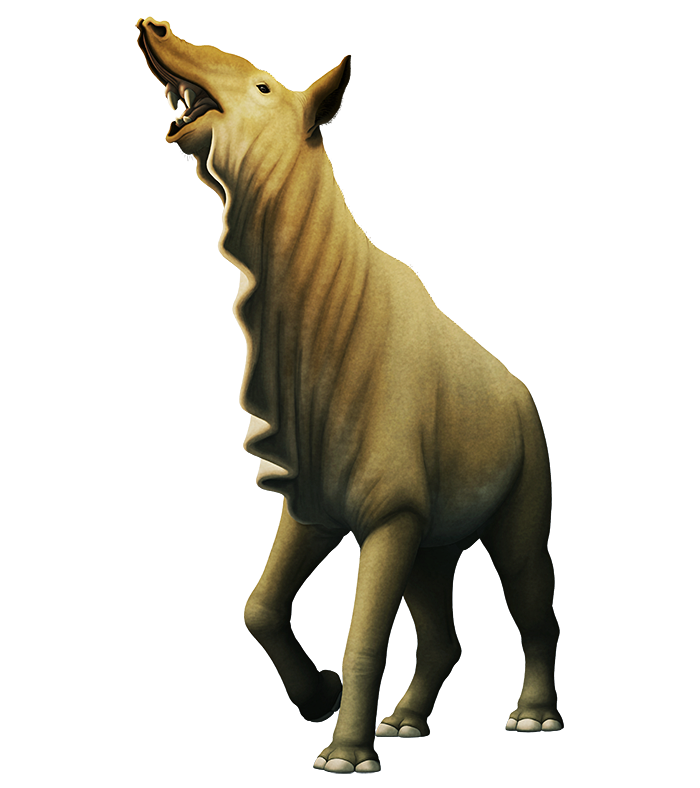While the largest animal known to ever exist is an aquatic mammal (the modern blue whale), mammals on land have never managed to attain the same sort of massive sizes seen in the sauropod dinosaurs. This is probably due to a combination of factors, including their reproductive strategies, metabolisms, and physiological differences like lacking internal air sacs – but even being limited to overall smaller body sizes, some of the mega-mammals known to have evolved during the Cenozoic were still absolutely enormous.
And one of the largest was Paraceratherium transouralicum.
(The exact name of this animal has a long and complicated history, and in various times and places it’s also been known as Indricotherium, Baluchitherium, and Pristinotherium.)
Found across much of Eurasia during the Oligocene, about 34-23 million years ago, Paraceratherium was part of an ancient lineage of long-legged hornless rhinoceroses. It stood around 4.8m tall at the shoulder (15’9″) – big enough that most modern humans would be able to walk right underneath its belly without even having to duck – and it had elongated limbs and a long neck that gave it an overall appearance much more like a giant weird horse than a rhino.
There was a pair of downward-pointing tusks at the front of its upper jaw, and the shape of the nasal region of its skull suggests its nose formed a short prehensile tapir-like trunk, which would have been used to help grab and strip leaves from high branches.
I’ve also reconstructed it here with a speculative dewlap on its neck, used for both display and thermoregulation.

